Every car owner’s nightmare is a flat tire. Double that if you don’t have a spare tire around, and make it triple when you’re in an emergency. If you’re wondering how many miles you can squeeze on your flat tire. It’s 50 miles or 80.4 kilometers.
However, you should drive slowly on a flat tire since it doesn’t have much traction or durability. Not to mention the potential of an accident when driving with a flat tire damage.
If you still have lingering questions regarding how far can you drive on a flat tire. Read on to learn more.
Table of Contents
If you must drive with a popped tire then make sure that where you’re going is relatively near.
The limit is 50 miles just right after the tire got punctured. However, you must prepare for any potential damage to your car.
However, flat tires shouldn’t be driven long distances. You’ll risk damaging your vehicle more, notably the wheels, brakes, and other parts such as your suspension and steering system.
Damage to these vehicle systems can drastically reduce handling, not to mention repair costs.
It’s tempting to drive a short distance on a flat tire. However, it’s better to drive on a spare tire instead, provided you have one ready.
If you don’t have considerable damage to it, the puncture could potentially be plugged and save you the hassle and money of getting a new one.
Suppose you need to drive a short distance on a flat tire. Just make sure that you’re going slowly.

If you’re asking, “can I drive a flat tire 2 miles?” .5 more than the recommended distance. Technically you can, but you’ll have to be ready for additional vehicle damage.
Furthermore, the most significant scare would be traffic accidents. As your car mishandles, the chances of getting traffic accidents rise exponentially.
One unintentional turn or stoppage when you ride on a flat tire is a one-way ticket to disaster.
Spare tires are essential when you’re driving. Having one can save you the hassle of driving slowly yet dangerously as you go on a flat tire, not to mention that a spare tire is a requirement in most state traffic laws.

Luckily, this is a lot better than driving on a flat tire. The time and hassle of changing a flat tire are worth it.
Spare tires are, as the name suggests, a spare. When driving with one, ensure you find the right kind of wheels for your car as soon as possible. Not only would this dramatically improve your handling, but you’ll mitigate the risk of popping another tire, this time without a spare.
When replacing a flat tire with a spare, you must follow several steps to ensure safer and more efficient work. These steps apply to your front or rear tire.
Step 1: Make sure you pull over safelyIf you decide to change your tires instead of driving on, pull over on the safe side of the road.
Also, place a warning device to let oncoming traffic know you’re in a dire situation.
Step 2: Make sure you have tools and a spare tireYou’ll need at least three tools when changing a tire on your vehicle.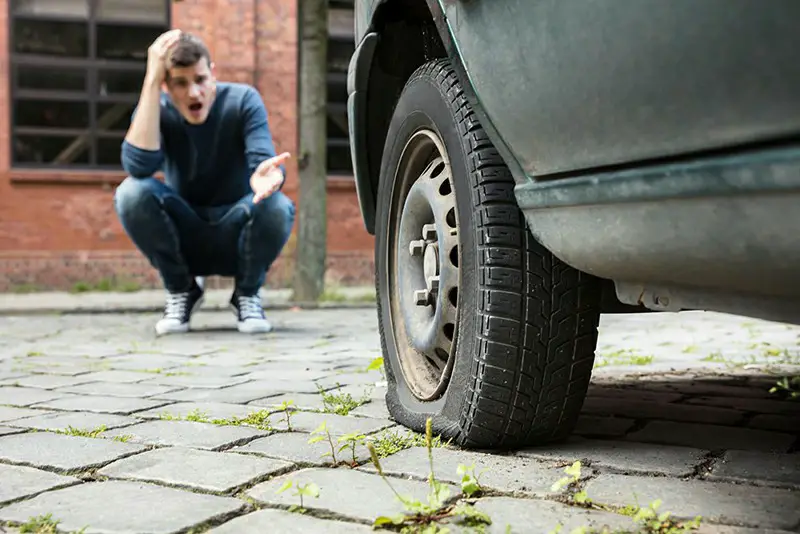
Additional tools can be:
Using a tire iron, loosen each lug nut on your wheels until you can easily turn them manually with your hands.
Step 4: Lift the vehicleRaise your car by placing the jack underneath the metal part of your vehicle. Avoid placing it under the plastic frame.
To best do this step, consider referring to your owner’s manual for additional assistance.
Step 5: Remove the tireCarefully remove your tire by removing the lug nuts. Ensure that the lug nuts are in a safe box. Then, pull the tire towards you to take it out.
Step 6: Place the spare tireCarefully place your spare tire, and using your hands, place the lug nuts, but don’t secure them just yet.
Lower your car and tighten the lug nuts while the tire slowly touches the ground.
Step 8: Ultimately, lower your vehicleLower your car and secure the lug nuts as tight as possible. You’re now ready to drive your vehicle.
I quickly looked through Reddit for some pro tips, and I saw that u/Grosse Fahrt advised that a donut spare can potentially damage the drivetrain if you place it on your drive axle. So a spare full-sized identical wheel is better to keep around.
There are many ways to prevent a flat tire, as prevention is better than cure. However, you must also be ready as even the most vigilant drivers can still have one, mainly due to wear and tear.

Most of us have driven on a flat tire at some point. Whether for a short period or longer, driving on a flat tire is never something you want to do.
Whether for a short period or longer, driving on a flat tire is never something you want to do.
Certain factors might cause you to drive with a flat tire, such as lack of spare tire, limited ability to change the tire along the way, etc.
Knowing “how far can you drive on a flat tire” will help you get out of the situation without damaging your vehicle or, most importantly, yourself if you are ever in this position.
When you purchase through links on our site, we may earn an affiliate commission. Here’s how it works.
It's possible, under some circumstances, to drive on a flat tire. (Image credit: <a href="http://www.shutterstock.com/gallery-50932p1.html"> Kenneth William Caleno</a> | <a href="http://www.shutterstock.com">Shutterstock.com</a>)For tire safety tips, you might do better than to ask Joshua Nadelhoffer, 29, of Jupiter, Fla.
Nadelhoffer was arrested Wednesday (May 8) after leading police on a high-speed chase in a stolen car with four flat tires, the South Florida Sun-Sentinel reports.
The tires on the car — a red Camaro, predictably enough — were punctured by a tire spike strip when Nadelhoffer rammed his way through a security gate at a Hertz Rent-A-Car parking lot in Fort Lauderdale.
Though he was eventually arrested after the Camaro spun out of control on Interstate 95, Nadelhoffer's stunt raises the question: How far can you drive on a flat tire (let alone four)? [Top 10 Teched-Out Cars for 2013]
A flat tire doesn't always announce itself with a loud noise or other obvious signs: Sometimes, the flat is the result of a slow leak that causes the tire to gradually lose air pressure.
When you realize a tire is flat while driving, remain calm but take action immediately. Slow down and pull off the roadway into a safe area away from traffic, the National Safety Council advises.
There are times, however, when the nearest safe area is the next exit ramp, or some other distant location.
Fortunately, it's possible to "drive several hundred yards before you irreparably destroy the tire," according to Car Talk.
It might therefore be smarter to drive slowly (not more than 20 mph, or 32 km/h) to a safe stopping point, rather than to stop on a busy highway.
The National Safety Council advises, "It is better to roll the car off the roadway … and into a safe place than it is to stop in traffic and risk a rear-end or side collision from other vehicles."
Saving the flat tire so that it can be repaired is one consideration; another is saving the metal wheel on which the tire is mounted.
The flat tire "acts as a cushion," according to Car Talk, protecting the rim of the wheel. You can therefore drive — again, at a slow speed — for hundreds of yards before your wheel is damaged, "though your tire may no longer be any good."
All this car care and safety information would probably be lost on Nadelhoffer — but because his arrest for grand theft auto is his fifth arrest in four months, he'll probably be parked in jail for a while.
Follow us @livescience & Facebook
Marc Lallanilla has been a science writer and health editor at About.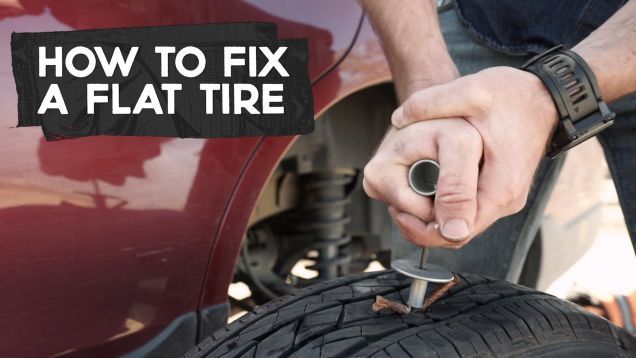 com and a producer with ABCNews.com. His freelance writing has appeared in the Los Angeles Times and TheWeek.com. Marc has a Master's degree in environmental planning from the University of California, Berkeley, and an undergraduate degree from the University of Texas at Austin.
com and a producer with ABCNews.com. His freelance writing has appeared in the Los Angeles Times and TheWeek.com. Marc has a Master's degree in environmental planning from the University of California, Berkeley, and an undergraduate degree from the University of Texas at Austin.
Related materials
2 sets of wheels or overboarding - which is more profitable?
Inflate the tire to three atmospheres and move off. After 3-5 minutes of travel, stop and check how much the pressure has dropped. At about one, grab the pump again. And so on until you reach the right place.
At a speed of 40 km/h on smooth asphalt with a flat tire, you can safely drive about 2 km. Moreover, most likely, after such a feat, the tire will be able to be pumped up and operated further. nine0003
An extra ten meters will not make the weather. After all, it is not clear how much you have already traveled on an "empty" wheel. So don't stop in the middle of the road. It is better to smoothly turn to the side of the road, and if there is a side platform within sight, slowly reach it.
After all, it is not clear how much you have already traveled on an "empty" wheel. So don't stop in the middle of the road. It is better to smoothly turn to the side of the road, and if there is a side platform within sight, slowly reach it.
Related content
8 studded tires: test on ice
For example, a sidewall puncture has occurred. There is nothing to lose - it will not be possible to reanimate the tire for further operation. But you can stretch 40 km / h from a dozen kilometers to a tire fitting. Be careful: closer to 15 km, the tire will start to smoke, crunch and fall apart. "Debris" can damage the apron, locker or bumper plastic. It's better not to bring it up. nine0003
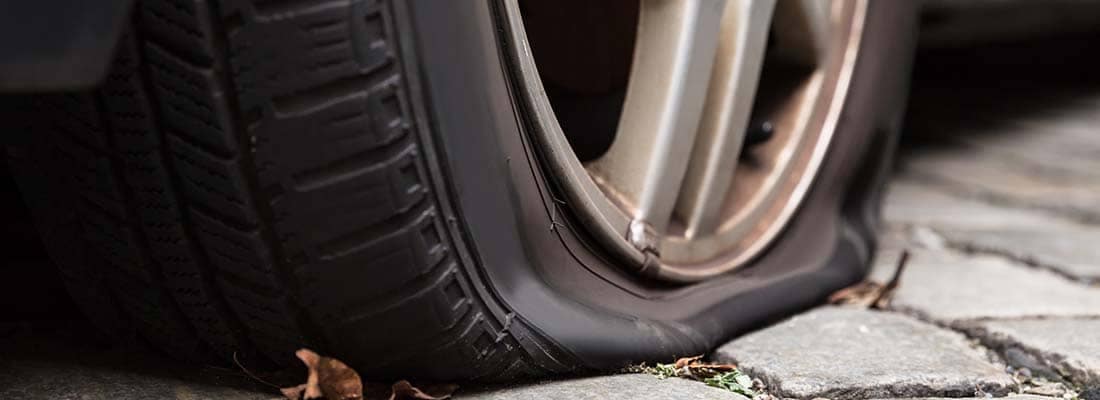 First, you can lose control of the car. Secondly, these actions will provoke the rotation of the rubber on the rim, which will accelerate its destruction.
First, you can lose control of the car. Secondly, these actions will provoke the rotation of the rubber on the rim, which will accelerate its destruction. Related materials
7 ways to "shoe" you in change shoes nine0003
The colder it is outside, the longer it will take for the tire to reach critical temperature and the further you will drive. But in the heat, the tire warms up faster, which means that the range will be reduced.
First of all - from the strength of the sidewalls and carcass of the tire. A thick sidewall will help you get to the tire shop, a thin sidewall will “die” much faster. Therefore, on a crossover (SUV tires have reinforced sidewalls) you will drive further under the same conditions than on a passenger car. nine0003

Photo: Depositphotos
Our new video
Moskvich 3: all the details and the first test!
2 Russian novelties that will replace Ford
Which is better off-road: Lada Vesta Cross or UAZ Patriot?
Did you like the note? Subscribe and you will always be in the know! nine0003
Driving Zen
News smi2.ru
On the road, various troubles can happen to a car and a rubber puncture on a car is a common case.
The absence of a spare wheel or a standard "roll-in" seriously complicates the situation. If the driver has the skills, you can put a temporary patch on the puncture, otherwise you will have to order a tow truck.
We recommend carrying a spare wheel, a repair kit for various occasions, the necessary tools, then you can get out of any traffic situation with dignity. If all this is not there, then you can drive on punched rubber a short distance to a service station or tire fitting. We are not talking about hundreds of kilometers of travel, we are talking about a short distance. nine0003
If all this is not there, then you can drive on punched rubber a short distance to a service station or tire fitting. We are not talking about hundreds of kilometers of travel, we are talking about a short distance. nine0003
Leakage of air from a car tire can occur in different situations. At the same time, punching is not necessary, there are other unforeseen and unpleasant situations. Most common:
 In this case, both the main part of the tire and the side part can be damaged. The side part is thinner and easy to cut. Particularly dangerous in this regard is careless driving along the roadsides, near the curbs, in a rut with sharp edges. The tire after a cut is practically not recoverable, it only needs to be replaced with another one.
In this case, both the main part of the tire and the side part can be damaged. The side part is thinner and easy to cut. Particularly dangerous in this regard is careless driving along the roadsides, near the curbs, in a rut with sharp edges. The tire after a cut is practically not recoverable, it only needs to be replaced with another one. Potholes or bumps in the road can be a serious problem. Hitting such an obstacle at high speed can lead to deformation of the car disk, subsequently to damage to the rubber. Very serious damage, which is impossible to fix on your own, without the use of special equipment, you need to go to a tire service.
Use of used car tires - adhere to manufacturer's specified service life.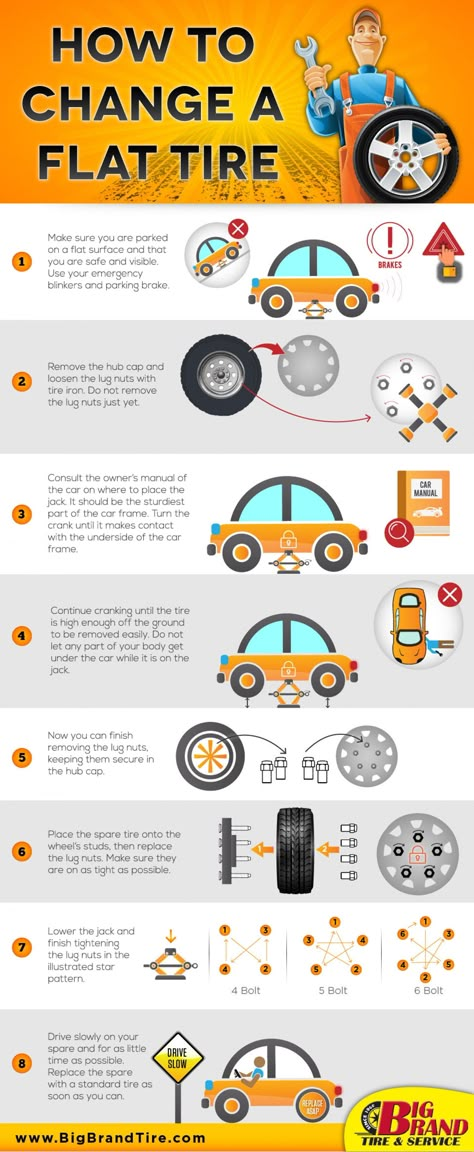 Otherwise, the wheel may deflate due to high wear. There is a risk of explosion directly during operation. nine0003
Otherwise, the wheel may deflate due to high wear. There is a risk of explosion directly during operation. nine0003
Problems exist with tubeless tires - the fitting sometimes does not fit well on the disc, air leaks.
The main causes that lead to damage to car tires and air leakage are indicated. Whether it is possible to drive on a flat tire is determined by the driver himself, taking into account his experience and capabilities.
Driving with a flat tire is not recommended. Driving a car is significantly more difficult, there is a risk of getting into an accident, creating a threat to other road users. nine0003
Among the main problems that driving with low tire pressure can cause are:

A flat tire is a serious hazard. Each driver must understand this and take all necessary measures to eliminate the problem. In no case should a puncture be ignored, at high speed the situation can completely get out of control. The ideal would be to replace the wheel with a spare, repair at the nearest tire shop. nine0003
A car tire is a complex system. Consists of different elements. Manufacturers use special technologies and materials to provide the declared driving characteristics of the car. The special pattern on the main part of the tire has its own functionality, and does not serve solely for beauty. Any deviation from the norm leads to a decrease in the functionality of the tire, respectively, the car loses its qualities. Its use becomes unsafe until the problem is solved.
Winter Drive protection
Tires Goodyear UltraGrip Arctic 2 SUV
Winter Drive Protection Sound Comfort
Rating:
4.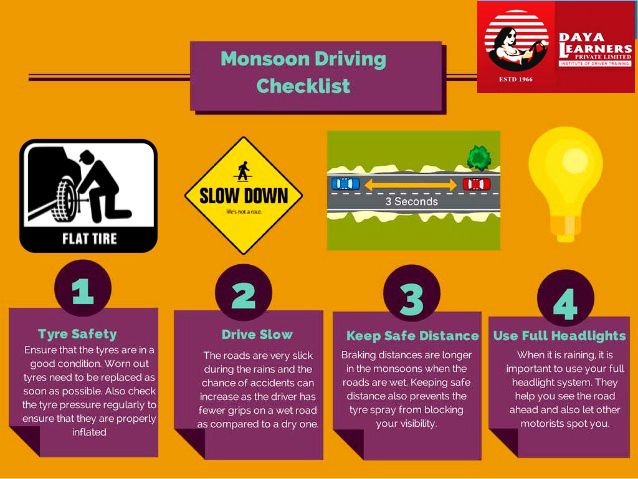 5
5
Tires Goodyear UltraGrip Ice 2
Winter Drive protection
Tires Goodyear UltraGrip Performance+ SUV
Winter Drive protection
Tires Goodyear UltraGrip Arctic 2
Winter Drive Protection Run On Flat Sound Comfort
Tires Goodyear UltraGrip Performance+
It is worth noting that under no circumstances should you drive with a completely flat tire. The situation can get out of control of the driver at any time, the tire will fly off the disk, he will receive damage that will lead to new problems. It's best to call a tow truck, no matter the cost. nine0003
The situation can get out of control of the driver at any time, the tire will fly off the disk, he will receive damage that will lead to new problems. It's best to call a tow truck, no matter the cost. nine0003
An exception to the rule may be a tire that still has some air left in it. You can try to get to a service station or tire fitting. You can also try to inflate the tire to give yourself more time.
Low pressure driving is possible subject to the following rules:
The average distance allowed to drive with a half-flat tire is 10 kilometers. This is only allowed if the above rules are observed.
Delays in dealing with low tire pressure, punctures or other damage will result in negative consequences. The following systems may experience problems:
A vehicle with flat tires is a danger to other road users and its driving characteristics are affected.
It must be understood that movement with insufficient pressure leads to deformation of the rubber. You run the risk of completely damaging the tire, subsequently replacing it with a new one. Therefore, the decision to drive on half-flat tires must be made carefully, carefully evaluate all the consequences and alternatives.